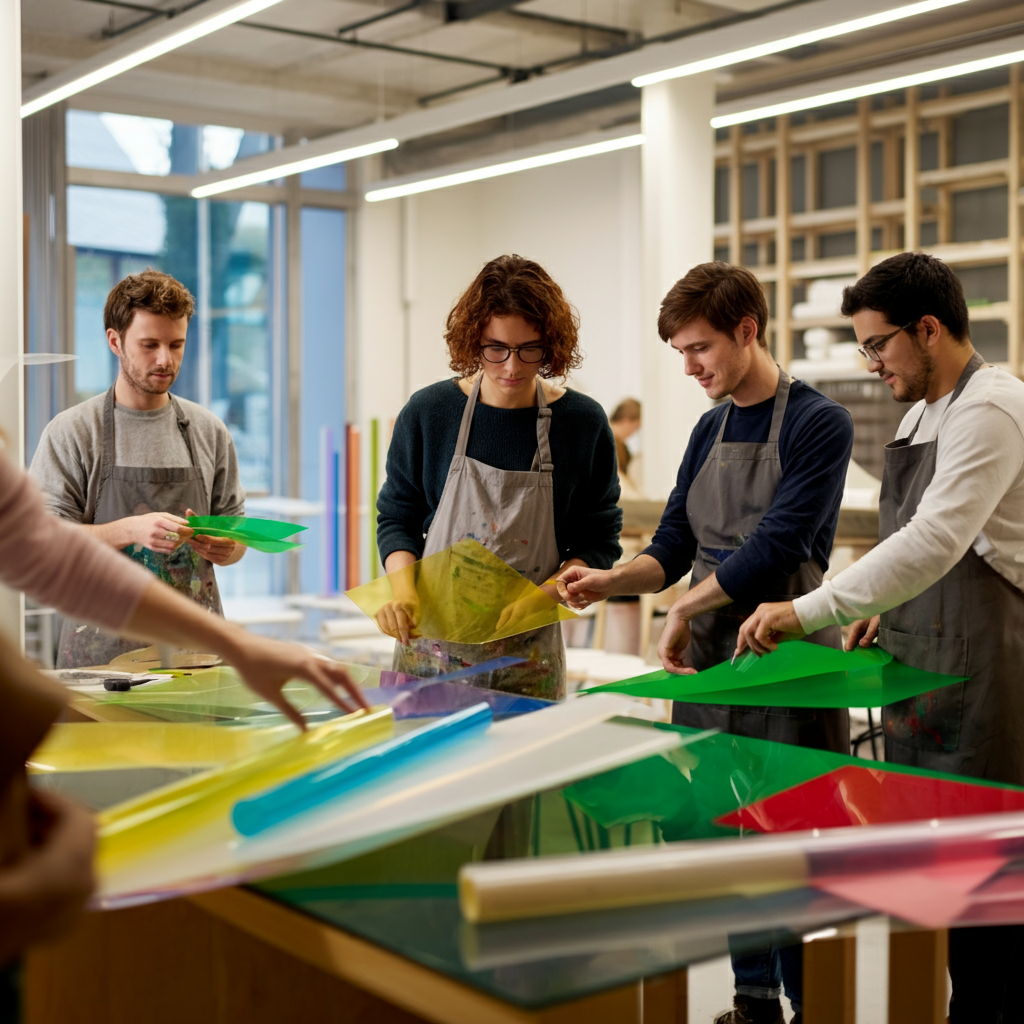Acetates might not be the first material that comes to mind for artists, designers, or educators, but their adaptability and potential make them a staple across creative industries. Whether you’re sketching designs, creating layered artwork, or teaching hands-on projects in the classroom, acetates provide the flexibility and practical benefits you’ve been searching for.
This blog dives deep into the world of acetates, offering insight into their properties, uses, and why they’re a favorite among creatives. You’ll learn how to incorporate acetates into your projects, their environmental impact, and the exciting future innovations shaping their role in art and design.
Understanding Acetates
What Are Acetates?
Acetates are transparent or semi-transparent sheets made from cellulose acetate, a plant-based plastic derived from wood or cotton pulp. They are lightweight, flexible, and sturdy, making them ideal for applications requiring durability and clarity—think architectural overlays, animation cells, or craft templates.
With their natural origins, acetates stand out as an eco-friendly alternative to petroleum-based plastics, combining usability with sustainability.
A Brief History of Acetates
The history of acetates dates back to the early 20th century when cellulose acetate film rose to prominence in the photography and film industries. Known for its lightweight yet durable properties, it quickly replaced earlier, more flammable materials like celluloid. Since then, acetates have evolved to find applications across various fields, ranging from art and fashion to packaging design.
Today, the use of acetates in creative contexts continues to flourish, thanks to their multi-functionality and versatility.
Acetates in Art and Design
A Creative Powerhouse
For artists and designers, acetates offer endless possibilities. Their ability to act as both a foundational component or a finishing touch to projects makes them indispensable. Here’s how they’re commonly used today:
- Layered Artwork: Acetates are perfect for creating transparent layers, allowing artists to experiment with depth and dimension.
- Prototyping and Mockups: Product designers often use acetates for quick and durable prototypes due to their ease of cutting and shaping.
- Screen Printing: Acetate sheets serve as stencils for screen printing, offering precision and reusability.
- Animation: Traditional animators use acetate cells (also known as cels) to hand-paint individual frames, showcasing an artistic heritage rooted in acetates.
Real-world Examples
Take the works of London-based designer Jane Turner, who uses acetates in her intricate light sculptures. The material’s transparency allows her to play with light and shadow, creating organic, glowing installations. Similarly, graphic design students often leverage acetates for overlays, bringing layered details to their projects.
Why Acetates Shine
Durability and Versatility
Acetates balance stiffness with flexibility, making them highly durable yet easy to manipulate. Need a sturdy medium but one that’s forgiving to folds or bends? Acetates are ideal for both functional and aesthetic purposes.
Eco-conscious Creativity
Some might hesitate due to the word “plastic.” However, cellulose acetates are derived from natural, renewable resources and are partially biodegradable, unlike traditional plastics. Brands that prioritize sustainability, like PrintWorks, now offer acetates designed with reduced environmental impact in mind.
Tips for Working with Acetates
Cutting and Shaping
For clean lines and smooth edges, use sharp tools like precision craft knives or scissors specifically designed for plastics. Cutting mats are a must to maintain accuracy and keep your workspace safe.
If you’re looking to shape or emboss your acetate sheets, gentle heating can make the process easier. Just be careful with the temperature to avoid warping!
Handling and Storing
Acetates are prone to scratches, so it’s essential to handle them with care. Avoid stacking unprotected sheets, and store them flat in protective covers. Dust and fingerprints can cloud the surface, so keep them clean with a soft microfiber cloth.
Acetates in Education
Tools for Learning and Creativity
Acetates are a favorite in classrooms, where educators use them to make lessons interactive. Think overhead projector transparencies or illustrative overlays that breathe life into science and geography lessons.
For hands-on learning, acetates are incorporated into art projects, encouraging creativity in young learners. From creating stained glass-style crafts to developing design concepts, acetates open up endless possibilities in educational settings.
Curriculum Integration
Educators are finding innovative ways to include acetates in their curriculum. For example:
- Science teachers use acetates to craft dynamic diagrams for cell structures.
- Art teachers encourage students to explore layered compositions using acetate sheets.
- Digital media classes incorporate acetates into analog-to-digital animation lessons, offering students a perspective on traditional practices.
Transformational Trends in Acetates
Emerging Uses in Creative Industries
The advancements in acetate technology are leading to breakthroughs in sustainability and design. Biodegradable acetates that decompose faster are gaining momentum, pushing the boundaries of environmentally friendly materials.
Meanwhile, 3D printing applications are exploring how acetate can play a role in creating lightweight, intricate designs for both the art and fashion industries.
Predictions for the Future
As industries prioritize eco-friendly materials, acetates are poised to become a more significant player in sustainable art and design solutions. Think recycled acetates, embedded textures, and hybrid overlays that could redefine mixed media.
Why Acetates Deserve a Spot in Your Projects
Acetates provide a unique blend of practicality and creativity. Whether you’re an artist looking to experiment with new mediums, a designer prototyping your latest idea, or a teacher enhancing your lessons, acetates offer unparalleled versatility. Their eco-friendliness and affordability make them a compelling choice for both professionals and students alike.

